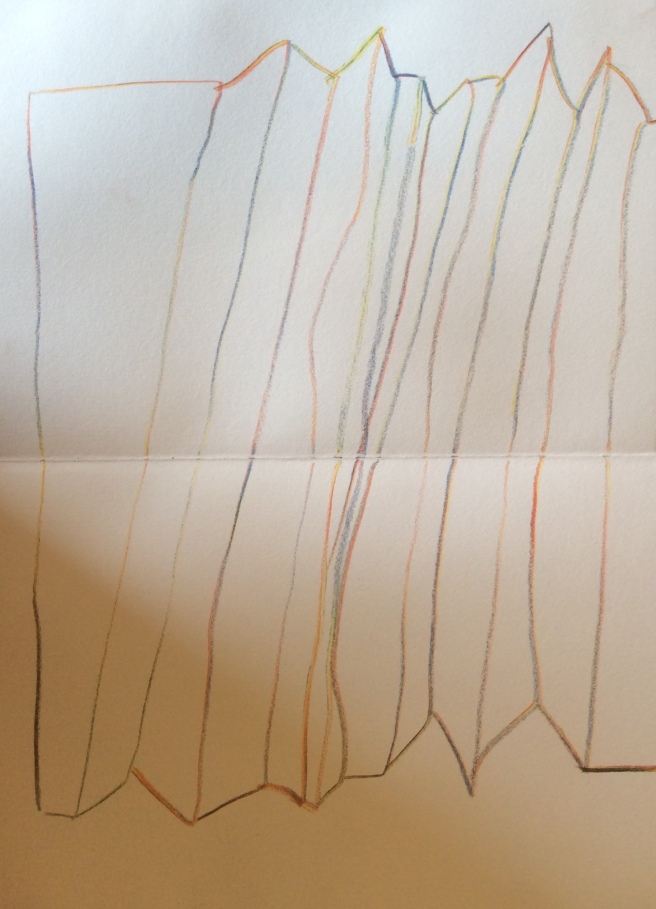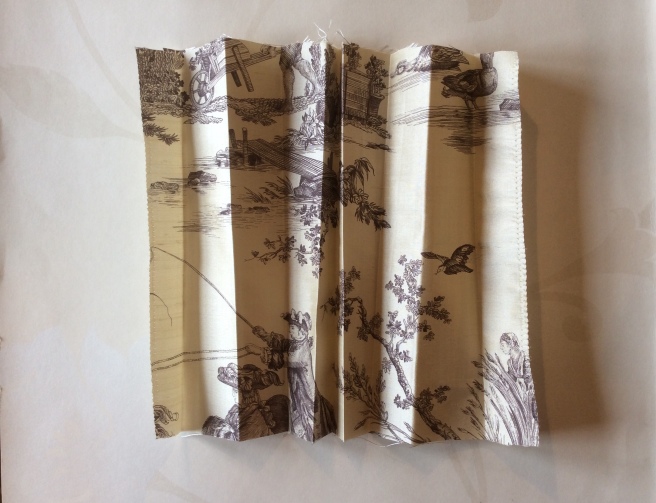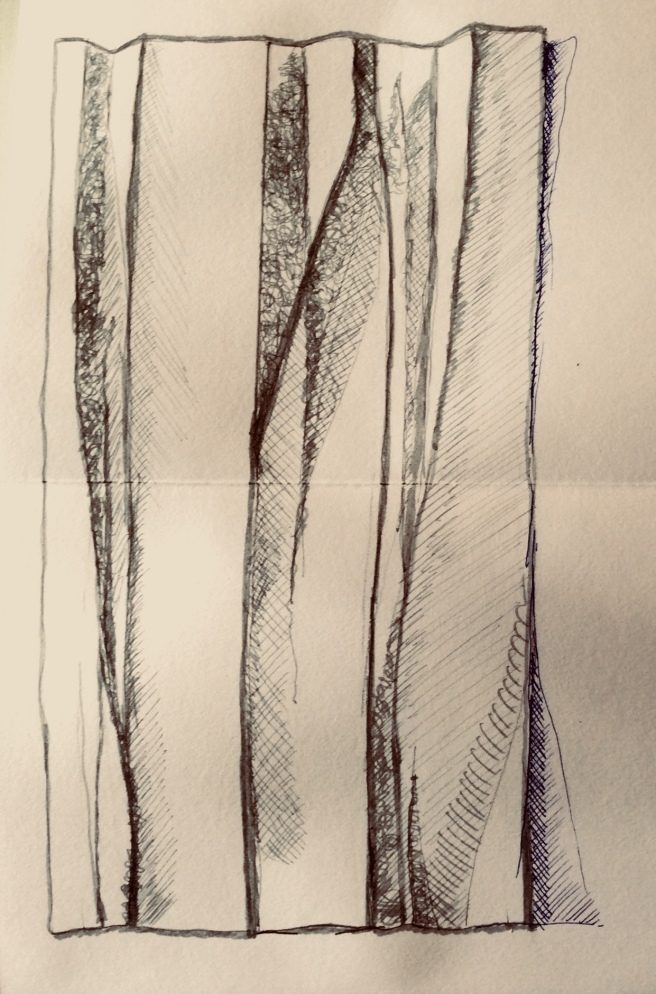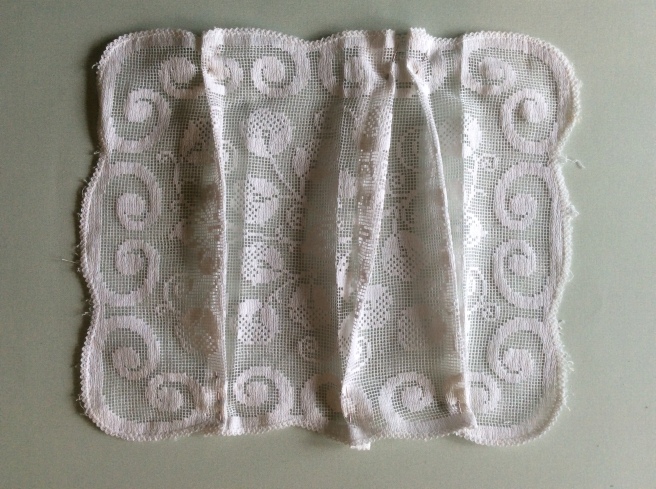Part 1. Surface distortion
Exercise 4. Incremental and twisted pleats
Incremental pleats are where the spacing between the folds increase or decreases. Use the figures to guide your making, first in paper then moving on to other materials.

Figure 1.14 incremental pleat in pink wallpaper approx A3

Drawing of Figure 1.14 incremental pleat
The wallpaper was soft to touch with a faint textured surface pattern of an irregular weave and it’s also washable. The softness of this paper made it a bit awkward to fold but easier to manipulate than some other papers. This may be because it was a on a larger scale, approximately A3 or a bit bigger.
I did not expect this sample to resemble anything organic but it does, I can only conclude that it is because it has an irregularity to it, similar to a natural organism or structure. The uneven line of the edge of the paper to me was interesting to observe as I rotated it.
At last I have finally produced a drawing that I am satisfied with, although it’s not necessarily accurate. It’s a simple line silhouette sketch drawn with a chunky variegated coloured soft lead. It’s very simple with no attempts to draw in shadows. This drawing does also express how I feel about the sample when I look at it, as it’s refreshing to get away from regulated pleats.

Figure 1.14a incremental pleat with 100% patterned silk
The ground was a 100% silk so it’s extremely soft and pliable to touch. Instead of meticulous measuring I decided to iron in the folds in an adhock incremental fashion, I think it shows that I haven’t measured it by looking at it in the photo. This reminds me of curtains that have been half drawn across in a hurried fashion as if someone needed to get up and leave the room quickly.
It was good to let go and just iron in the creases by eye, that was quite liberating.
Because the sample is made of silk in a certain light there is a beautiful sheen to the surface when it is rotated.

Figure 1.16 Twisted pleat on A4 photocopier paper

Drawing of 1.16 twisted pleat on A4 photocopier paper
I have photographed and drawn this sample upside down to demonstrate that it can work either way up. This sample creates ambiguity between its obvious paper surface and the shaping which implies it should be fabric. Ordinarily paper just doesn’t behave like that! This sample more than any of the others so far reminds me of the designer www.julewaibel.com I am reminded of my chosen image for her trousers in my (research folder) except the reverse concept. Her trousers were probably made of fabric but the trousers have a folded paper like quality.
This was quite easy to get the initial folds into place however manipulation of the twist was not easy. The paper resisted quite a lot. When I turned the sample upside down I was surprised to see it has the same look but it’s not the same, the folds and flattened areas are in different places.
Drawing folds and shadows is really challenging for me, I have learnt that in order to achieve an accurate representation of a folded sample, your concentration, observational and drawing skills have to be really good. I have found some of these curved folded samples frustrating but an opportunity to improve my technique nevertheless.

Figure 1. 16a twisted pleat in striped wallpaper 20 x 37 cms approx
This sample looks very effective because to me the curved line of the pleat is smooth and bold against the straight candy stripe, it’s as if the two are on the same footing, working alongside each other as a strong components in the design.
Manipulation of the wallpaper and getting it to stick down was a bit challenging and the folds were not that easy to negotiate.
I found myself focusing on the bold curved pleat lines of the wallpaper as I rotated it so I would say that the curves are visually more dominant than the candy stripe patterned ground on reflection.

Figure 1.16b twisted pleat in cotton machined lace
This is such a natural choice for this type of folding. I associate curved folds with delicate and fine fabrics, it’s something I would expect to see on a gown or drapes at a window. The fabric is very versatile and easy to manipulate, however there is no resistance or strength to it so it had to be pinned down in order to keep its shape.
The curved lines look fixed and straighter than the wallpaper samples which is interesting, even though the pleats were much easier to manipulate they naturally fell into place once pinned, so the curved line is not as effective as the smooth curved and confident line of the wallpaper sample seen above.
As the open lace work is sheer, the design of the lace was the most obvious distraction once rotated and the shadows were very subtle.